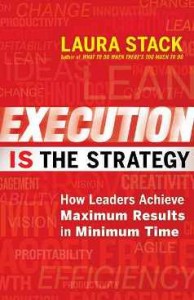
Back in the golden age of American business—before the dot-com meltdown, the Great Recession, and the banking crisis—most business leaders considered strategy and execution two different (if related) factors in the business equation. Strategy was something arrived at gradually at high-level meetings that took days, typically defined in 3-to-5 year chunks. At best, execution represented the downstream outcome of the leadership strategy, which was to be implemented by the management team. We all know better now, having realized the hard way that strategy and execution are actually aspects of the same business continuum. In its most simplistic sense, execution is the process of moving from A to B, or from a stated strategic initiative to a tactic. Efficient execution, then, is the shortest … [Read more...]











